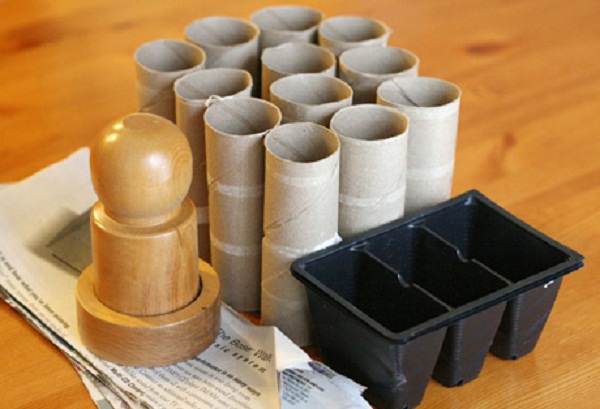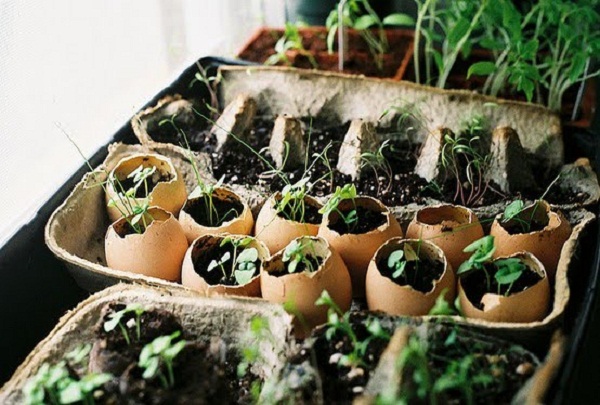
If you are an Eco-savvy gardener, surely you are looking for ways to reuse and recycle around your backyard. Here is a good idea. You always need something to house your seedlings before you plant them. You have to hold the soil and allow water to drain in them. Little containers are just right for rearing them and if you look in and around, you will come across several materials that you can easily use. Instead of throwing them out from your home as waste, put them to some use. This way you will also save the money spent on purchasing containers for the seeds.
1. Paper towel cylinders
The tube-shaped cardboard in toilet rolls makes a sturdy stand for your seeds. Just reduce their size with scissors, if needed. Add a bottom with cut out cardboard or newspaper. You can easily collect them instead of chucking the rolls into the trash can. If you need many, then just let your neighbors know that you require some from their home too.
2. Plastic or paper cups
All of us eat yogurt and ice cream out of those mini-plastic or paper cups. Put them to better use later by throwing your seedlings in them. You can also use the vending machine coffee and tea cups you drink out of. These single serving cups and bowls can be washed clean and reused. Just bore a hole through the bottom of the cup. Then you can add in the potting soil, seed starter mix, etc. You want to seal in the moisture so just cover-up the open end of the cup with a plastic and secure it tight an elastic band.
3. Egg shells
Make an all natural and organic seed container with these. Making the hole can be slightly challenging but when done you can push a small seed through it. Rinse them thoroughly before using and allow shoots to sprout up inside. Crush the shells gently when you are going to plant the baby shoots. If you want to use these, then remember to break the eggs carefully when you cook up an omelet every morning. Do not strike the eggs in the middle, just whack up a hole on the top instead.

4. PET bottles
We do not think of using plastic bottles as seed containers because usually they are way too long. Unless of course, you have brought a much smaller bottle. But whether long or short, you can use them both. Just cut off the top half of tall bottles and bring them down to the height desired. Using plastic bottles is a really good idea as only about 3% of them are recycled. Puncture a hole at the bottom and they are ready to be used again.
5. Tubs and containers
Ice creams, fruits, sliced vegetables, cereals, take out dinners â there are so many times you eat out of and buy plastic tubs and containers. Do not throw out these plastic containers, make seed starters from them instead.
6. Newspapers
Did you make those paper planes and boats when you were a kid. Craft lessons can come handy again to turn newspapers into seedling pots. Take a sheet of newspaper and fold it over along the crease line. You will fold it 3 times in the entire process. Fold along the width the second time then the third time fold width-wise again. Now use a cylindrical vessel like jar or can as a guide. Place it on the paper and roll the paper into a tubular shape. Remove the vessel and see if the paper stands up on its own. If it does not then tie a rope running through the middle. For the bottom just squash another sheet of newspaper and press it down the middle of the newspaper tube just built. Add some weight to flatten it.

7. Cartons
Your milk, juice, or cereal boxes can also be reprocessed and the egg cartons make perfect seed starter containers. You have a whole tray with individual compartments, why shell out on expensive trays up for sale in nurseries. Again drill a hole at the bottom and pack then with soil, seeds, etc. If these containers are made from plastic or any other non-biodegradable material then you will have to empty the contents into the earth while planting. However, if you are using cardboard ones then just deposit the entire box into soil. The cardboard will decompose with time and provide nourishment to the plant as well as the soil.


